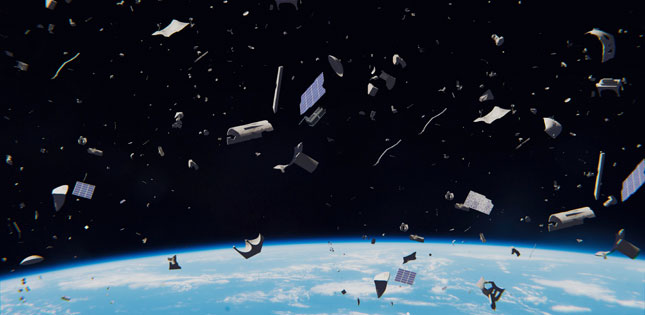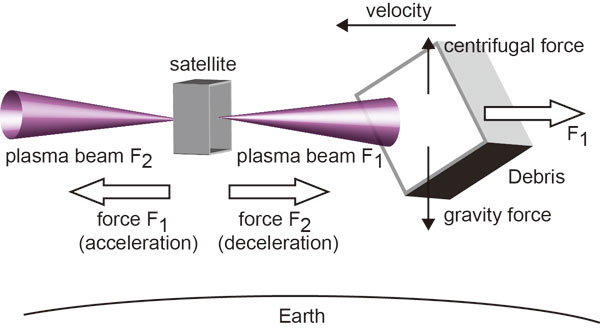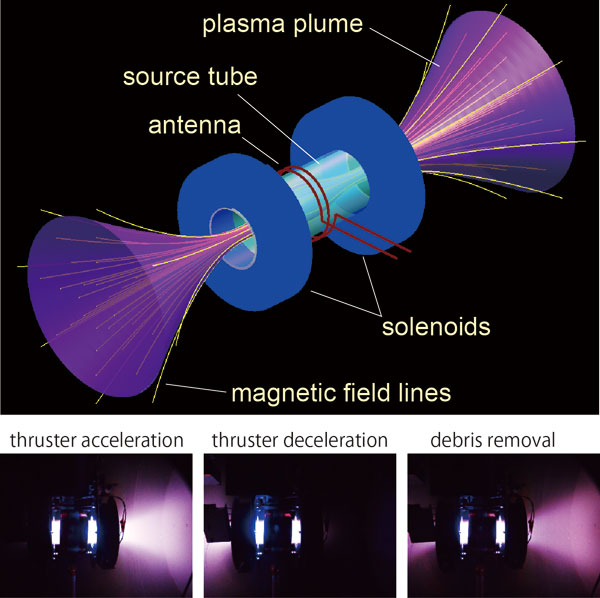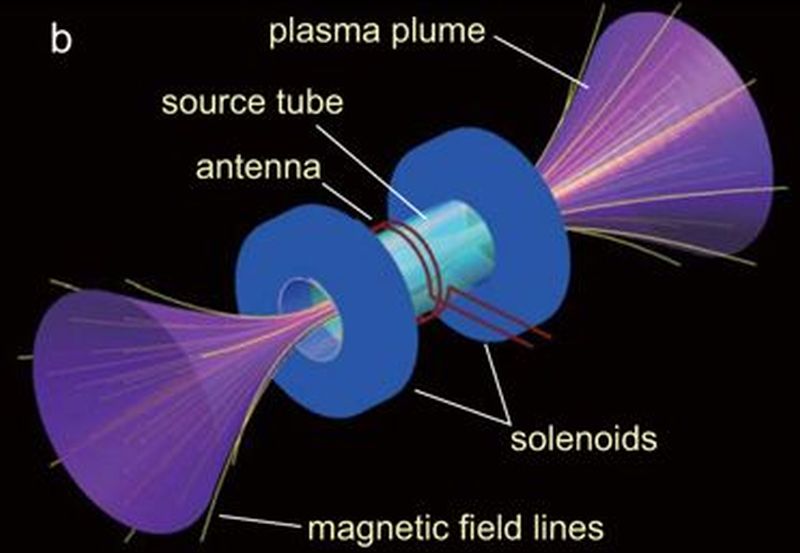Space junk is a growing problem. For decades we have been sending satellites into orbit around Earth. Some of them de-orbit and burn up in Earth’s atmosphere, or crash into the surface. But most of the stuff we send into orbit is still up there.
This is becoming an acute problem as years go by and we launch more and more hardware into orbit. Since the very first satellite—Sputnik 1—was launched into orbit in 1957, over 8000 satellites have ben placed in orbit. As of 2018, an estimated 4900 are still in orbit. About 3000 of those are not operational. They’re space junk. The risk of collision is growing, and scientists are working on solutions. The problem will compound itself over time, as collisions between objects create more pieces of debris that have to be dealt with.

There are two classification of space junk removal systems: contact methods and contactless methods. Contact methods include robotic arms, tethers, and nets. Contactless methods include lasers and ion beams. So far, the contactless methods have proven more reliable. A team from Tohoku University in Sendai City, Japan, and their colleagues at the Australian National University, are developing a unique contactless method called the ion beam shepherd contactless method.
There are two problems with aiming ion beams at space junk and directing it toward Earth. The counterforce pushes the satellite out of position. The other problem is the mass of the space junk itself. It takes a lot of power to direct it harmlessly towards Earth.
Scientists are focused on satellites in Low Earth Orbit to start. These objects tend to be in the 1 to 2 ton range. According to the study, objects in this mass range would take about 80 to 150 days to be de-orbited. Developing, building, and launching a satellite powerful enough to do this, with two separate thrusters, is difficult and expensive.
“If the debris removal can be performed by a single high-power propulsion system, it will be of significant use for future space activity.” – Associate Professor Kazunori Takahashi, Tohoku University, Japan.
The Japanese-Australian team is developing a system that solves these problems with a unique bi-directional plasma beam arrangement. The two beams can counteract each other, with one keeping the shepherd satellite in position, and the other directing the junk toward Earth. A single power source powers the two beams, and the satellite aims the beams as required.

“If the debris removal can be performed by a single high-power propulsion system, it will be of significant use for future space activity,” said Associate Professor Kazunori Takahashi from Tohoku University in Japan, who is leading research on new technology to remove space debris in collaboration with colleagues at the Australian National University.

Lab tests have clearly demonstrated that a helicon plasma thruster can remove space debris with a single propulsion system. The lab experiments, magnetic fields and gas injections control the plasma plumes from the single plasma thruster. Laboratory tests measured the force applied to the simulated space junk. The system applied the exact amount of counterforce to the satellite to keep it in position. The system operates in three different modes: satellite acceleration, satellite deceleration, and debris removal.
“The helicon plasma thruster is an electrodeless system, which allows it to undertake long operations performed at a high power level.” says Takahashi, “This discovery is considerably different to existing solutions and will make a substantial contribution to future sustainable human activity in space.”
Sources
- Tohoku University Press Release: Plasma Thruster: New Space Debris Removal Technology
- Research Paper at Nature.com: Demonstrating a new technology for space debris removal using a bi-directional plasma thruster
- Wikipedia entry: Satellite


All these solutions are OK. But to further compound the problem in future, a international space treaty is needed. It will make it mandatory to return motors, boosters, rockets and satellites back to earth. Necessary technology is already in place in the form of reusable rockets.